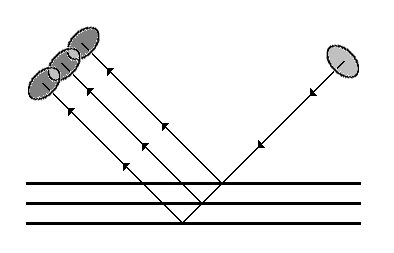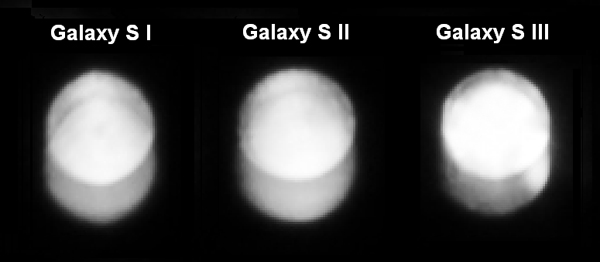Mirror (specular) reflections from display screens can be very annoying because they are superimposed images that compete with the display's own image. Plus the eye automatically tries to focus on the distant reflected images instead of the much closer display screen. Both of these effects cause eye strain. Because the screens are made up of multiple layers of glass and plastic they actually produce multiple reflections from light bouncing off each of the different layers.
To examine the reflections we bounced a tiny 3mm in diameter highly collimated pencil beam of light at 45 degrees to the screen and photographed the reflected beams, which appear as overlapping circles in the photos below. This lets us identify and measure the different layers within the screens. Highly magnified photos of the Smartphone reflections are shown below together with a simplified diagram that outlines how it works. Smartphone displays generally have 2 or 3 prominent reflections. The top circle is from the top layer of the cover glass. Each subsequent layer produces an additional reflected circle. Any Air Gaps between layers also introduce additional reflections. The camera exposures are chosen to maximize the visibility of all of the layers and reflections.
All of the Galaxy S Smartphones have the cover glass bonded directly
to the display
so there is no Air Gap and no third reflection as in most other Smartphones.
This is one reason for their low screen Reflectance.
The Galaxy S III has its most prominent reflection from the top cover glass.

